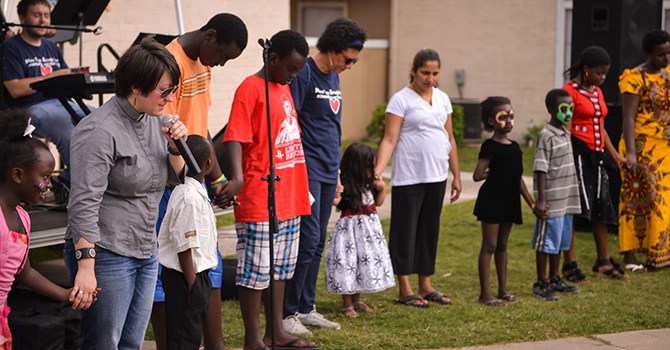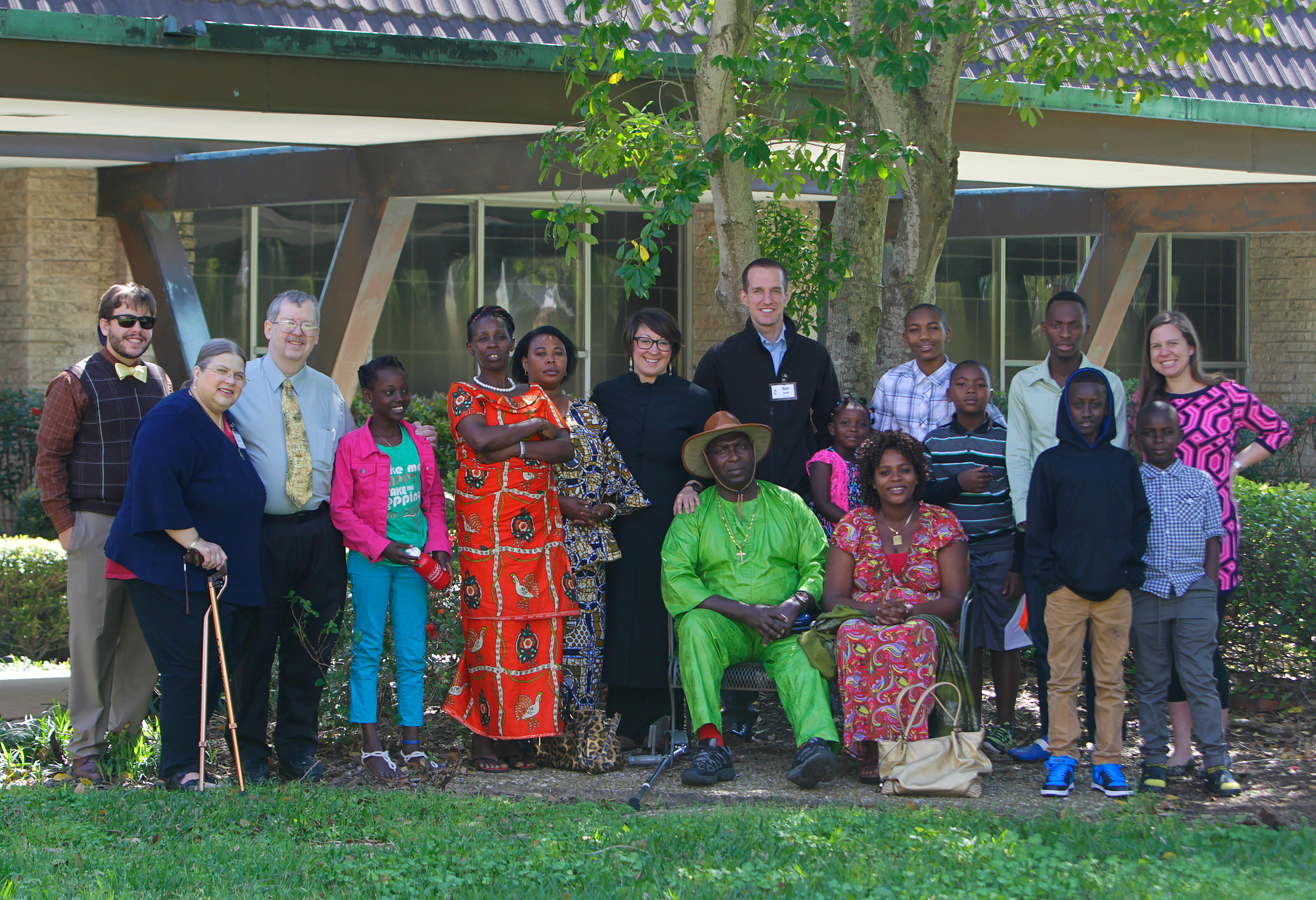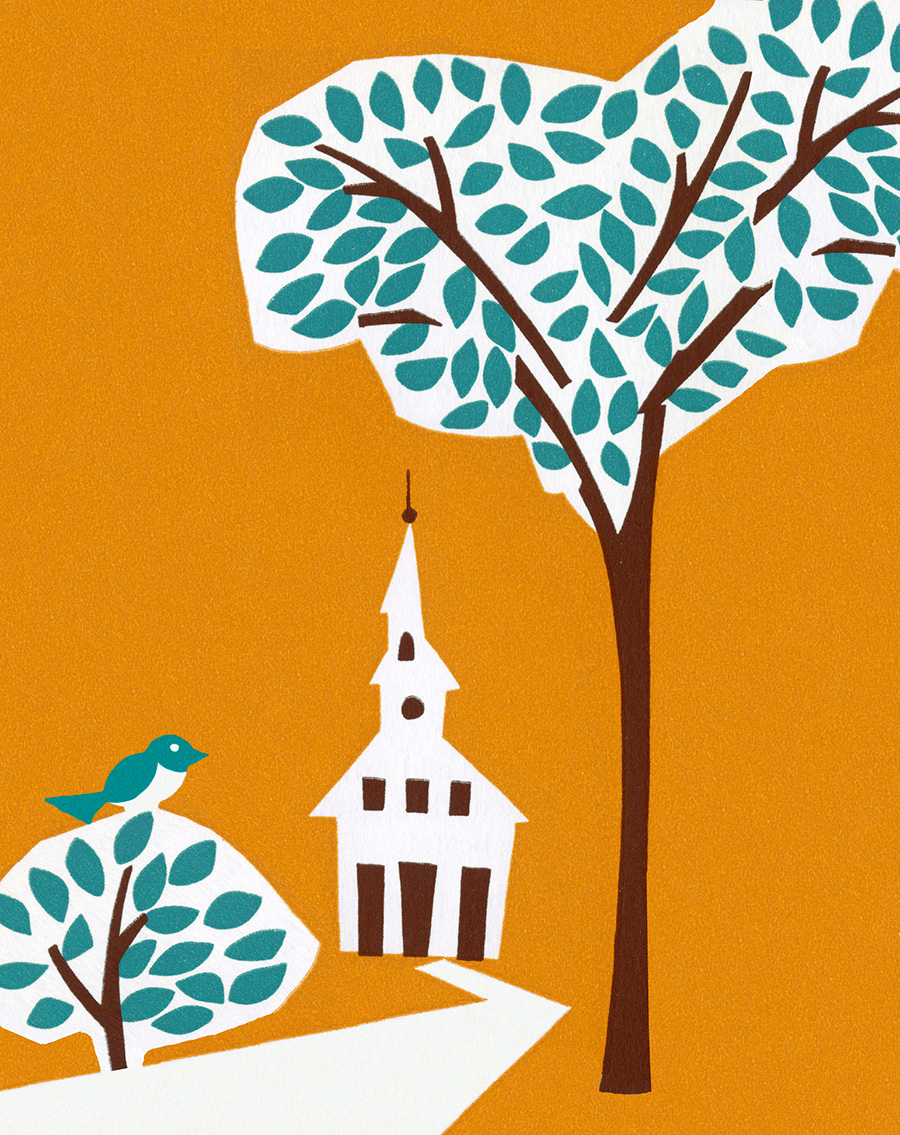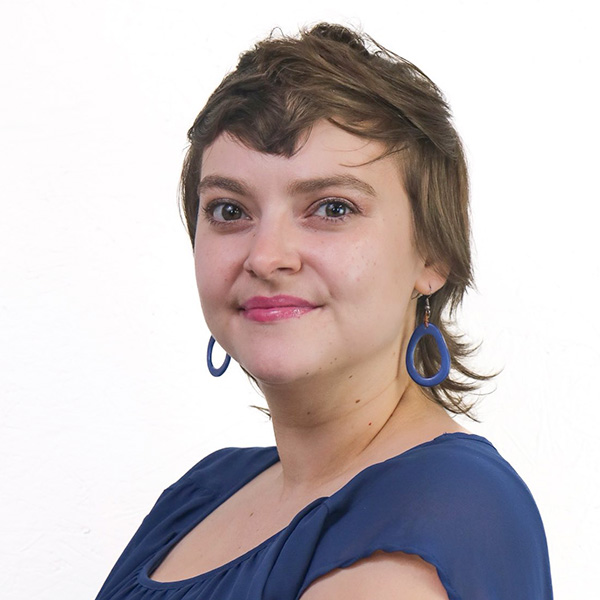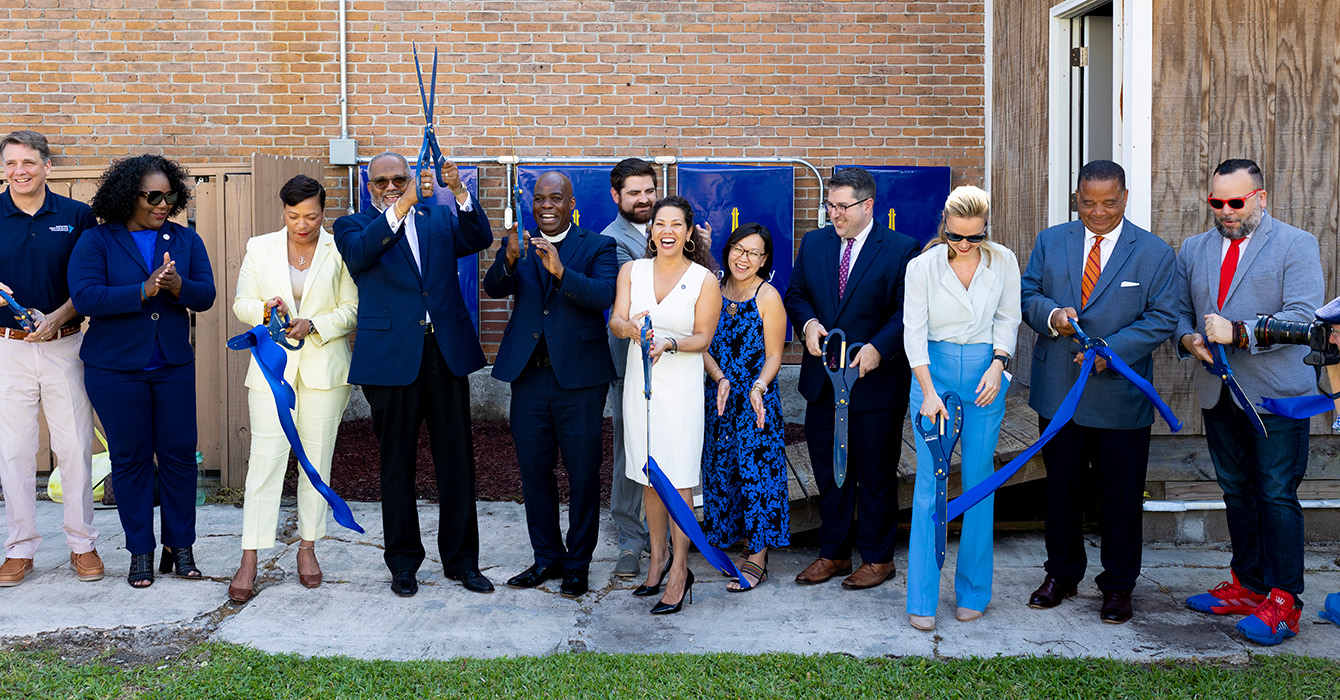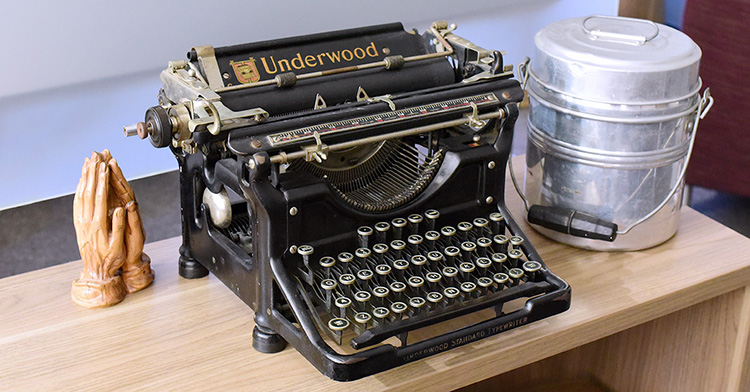Innovative ideas -- and innovative colleagues -- can present challenges when budgets are tight, staff is shrinking, time is short and traditions run deep.
But wise senior leaders cultivate a mindset of experimentation, identify and develop emerging, creative leaders, and seed an institutional culture in which innovative ideas are welcomed and explored.
What are the best ideas and practices for clearing space and welcoming innovators in your midst? How do you identify innovators and then understand their potential for strengthening Christian community? How do you then provide supportive environments in which they can experiment and flourish?
Cultivate the right mindset
What is the mindset leaders need in order to identify and support innovators?
The Rev. Janice Riggle Huie, the bishop of the Texas Annual Conference, knew that the city of Houston was changing, yet many of its United Methodist congregations, like Westbury UMC, weren’t connecting with the city’s new residents.

She set out to address the issue by appointing “creative, more entrepreneurial, deeply spiritual, wanting-to-reach-the-community” pastors such as the Rev. Tommy Williams, then the Rev. Taylor Fuerst and the Rev. Hannah Terry. These pastors had the mindset of asking questions, not supplying immediate answers.
Huie said she is “always on the lookout” for ways to “build stronger, deeper connections” with diverse communities. She saw the value in the mindset of these pastors who were starting with good and faithful questions -- What is the purpose of this church? Why did God put Westbury here? Who is my neighbor? What gifts does this group of neighbors bring?
When Terry moved into a nearby apartment community that was home to many refugees and other immigrants, she was able to establish a “ministry of presence” there, but it took time and patience.
Huie acknowledged that cultivating the mindset to support innovators like Terry takes time and patience as well -- a willingness to give the seeds a chance to grow and put down their roots. “Just leave it alone and see what God will do here,” Huie said. “It is a time when it is ‘both-and.’ It’s both bringing along the church that was, and at the same time, you’re doing a new thing, this new connection with the community.”
Delve deeper: Supporting innovators in this situation means taking on the mindset of asking questions and looking for others who are also willing to ask questions. The next step is walking alongside innovators with patience and openness as they seek and then do their work. Explore our discussion guide for questions your ministry team can consider together.
Stay future-focused
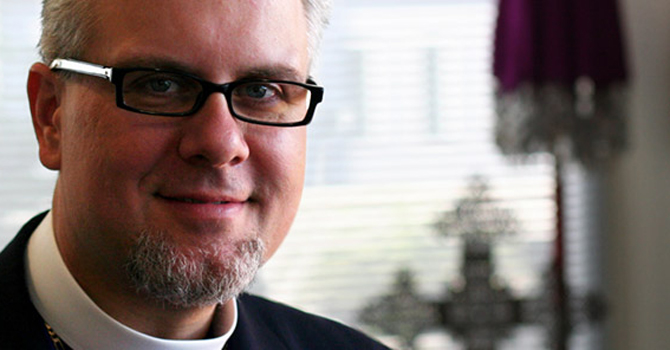
For most Christian leaders, the day-to-day tasks of ministry are not particularly innovative or farsighted. But the Rt. Rev. C. Andrew Doyle, the Episcopal bishop of Texas, calls leaders to be intentional about envisioning the church of the future. “We need to imagine the world in which we want to be doing ministry,” he said.
If you stay focused on the day-to-day, you will remain mired in what doesn’t work in your organization, he said. But if you can envision a church that is adaptive, light and structurally flexible, you can grab hold of that vision and work toward it.
This requires leaders to take time not only to dream about a future church but to “imagine the tasks and the work and the ministry,” he said, in order to cultivate young leaders for that future church.
“What we know is that creativity, innovation, adaptability are all characteristics that come out of actually doing work, trying new things, being placed in circumstances that demand people’s best efforts,” Doyle said.
The first step is “allowing space where people [can] fail generously and not get persecuted for it,” he said.
Delve deeper: Where and when could you clear the space for people -- including yourself -- to dream? Read “Getting Beyond Better: How Social Entrepreneurship Works” by Roger Martin and Sally R. Osberg to learn about innovators who transform systems into better, more just organizations.
Scatter seeds broadly

In the parable of the sower, the planter scatters seeds with abandon, unconcerned with where they land -- on the sidewalk, among thorns and rocks -- and knowing that not every seed will grow.
“The farmer doesn’t fertilize the soil, dig around it, apply insecticide, carefully cover the seed over,” said Vancouver School of Theology homiletics professor Jason Byassee in a 2011 sermon. This farmer flings seeds as though he has “seed to spare” and “likes to see what can grow where it’s not supposed to grow.”
Byassee used the parable of the sower to point to the rich ministries that can spring up when Christians pursue innovative ideas. Many of the church’s most cherished traditions were first someone’s crazy idea, he said. We in the church need to be willing to let people try a variety of ideas, knowing that some will fail, some will fall on rocks and thorns, and others will blossom into wonderful, innovative ministries.

You may have less control than you’d like to think, so you need to scatter your seeds broadly. “What wild, unexpected seeds might you be holding in your hands, friends?” Byassee asked.
Delve deeper: What wild ideas have you heard lately that might be God-given? How might you stay with them long enough to see their merit? Read “The Mad Farmer Poems” by Wendell Berry to explore this mindset that chafes against the status quo and beyond our expectations.
Stop ‘helping’ people
The staff and congregation at Broadway United Methodist Church in Indianapolis have changed the way they view their neighbors. They have learned to see them as people with gifts, not people in need of charity.
When the Rev. Mike Mather’s declining downtown congregation decided its call was to be good neighbors rather than bestowers of blessings, they began to close down their traditional ministries -- food pantry, clothing closet, summer youth program -- and instead begin a listening campaign. They hired a “roving listener” who spent time with people in the neighborhood, approaching them as children of God with gifts and talents.

With asset-based development in mind, the church asked people questions like, “What three things do you do well enough that you could teach others how to do them?” They discovered that people within the community had solutions to many of their own problems. The church found individuals who could repair cars, cook wonderful meals, garden, make quilts, write poetry and paint.
With the church’s encouragement and connections, many of these people started small businesses and began to live into their own God-given abilities.
Delve deeper: Mather believed that his church’s neighborhood was full of God-given gifts that needed to be cultivated and allowed to grow. What gifts surround you in your institution or community? Where could you see abundance instead of scarcity? How might seeing abundance encourage you to cultivate innovation? Read “Becoming Human” by Jean Vanier for another perspective on how we can open ourselves to those whom society considers powerless or inferior, thereby enriching our ideas about ourselves and our community.
The art of neighboring
Like Broadway UMC, St. Paul’s Episcopal Church in Richmond, Virginia, has innovated through an intentional focus on its neighbors. This church remained in historic downtown Richmond when other churches moved to the suburbs. As a result, when the city experienced a rebirth, the congregation was in a position to ask, “How can we contribute to the flourishing community?”
After several years of conversation, St. Paul’s decided that its focus would be on the art of neighboring, said the Rev. Wallace Adams-Riley, the church’s rector. Not knowing what they might find, they asked groups and individuals throughout the city the question, “What do you need that we could provide?”

and other Richmond downtowners
engage in a session of "pub theology."
Photo by Dean Hoffmeyer
They hired the Rev. Melanie Mullen to be the “downtown missioner,” focused on bringing St. Paul’s parishioners out of the church and into the community and building relationships with downtown and its residents. The ultimate goal, Mullen said, was to inspire Richmonders, even those unaffiliated with the church, to put community first.
The congregation has partnered with other civic groups, supported existing programs and made its presence known in the community in innovative ways, such as offering a Stations of the Cross exhibit at a nearby farmers market, distributing “Ashes to Go” on the streets on Ash Wednesday and holding Mullen’s Friday office hours at a local bakery. While they don’t know where such efforts might lead, they are committed to this innovative movement out into the city.
Delve deeper: Where do you need to explore the art of neighboring? With whom might your institution partner? What innovators might you discover? For further thinking about how to partner in the neighborhood as St. Paul’s has, read the memoir “Breathing Space: A Spiritual Journey in the South Bronx” by Heidi Neumark.
Unlock imaginations

After studying how doctors treat patients with amnesia, pastor and anthropologist Marlon F. Hall and his Awakenings Movement colleague Danielle Fanfair developed a set of practices to help downtrodden people remember “a more illustrious past.” (Hall is the filmmaker who produced the video that accompanies this story collection.)
“We seem to have no memory of who we are, who God is and what he has called us to do,” Hall said. “In order to imagine the future, we have to remember the past.” So Hall and Fanfair developed a weeks-long, multistep process for helping people recover their cultural memory and core identity and pursue goals in their personal and professional lives.
The process is designed to unlock imagination by removing obstacles to memory, Hall said. It involves five practices: journaling; excavating key moments from personal history and finding parallel biblical stories; engaging in “automatic” drawing while listening to music; exploring fears and dreams through art therapy; and crafting a detailed plan for reaching new goals.
Hall used this “amnesia therapy” to unlock imaginations in a low-income African-American Houston neighborhood, a process that resulted in a series of art installations around the area, reminding residents of their rich cultural and political histories and further stimulating imagination and positive responses.
Delve deeper: Hall knew that he needed to unlock the imaginations of the community in order to unleash their creative potential and their cultural history. Who and where are the people with imagination in your organization? Would Hall’s process work to cultivate and support your own innovators or constituents? Read “Out of Our Minds: Learning to Be Creative” by Ken Robinson for additional ideas about how to cultivate creativity and innovation.
Conclusion

Dave Odom, the executive director of Leadership Education at Duke Divinity, has noted that supporting innovation is not about “heroic efforts by a leader.”
“Rather,” he said, “it is about a process of setting up a fence around the innovation to protect it from the forces that smooth the edges off creativity. The senior leader identifies the talent to work in the disruption and provides the tools and resources necessary to experiment and learn.”
What might be preventing you from clearing and protecting this space?

